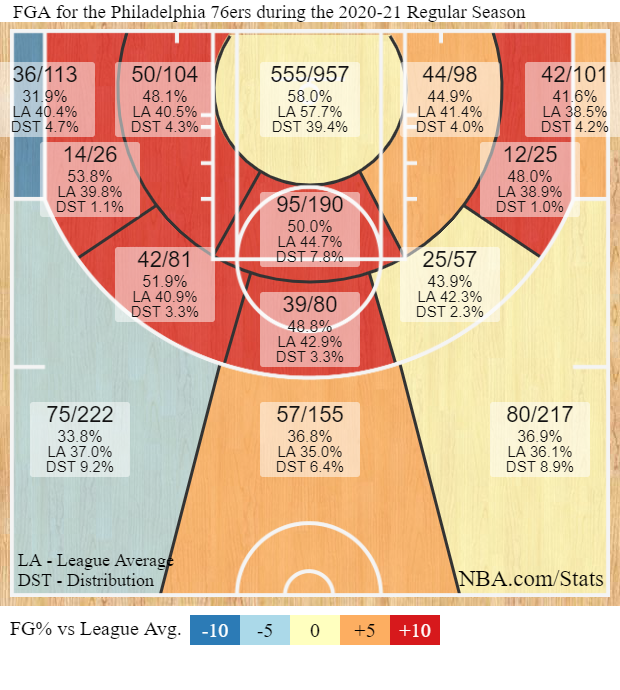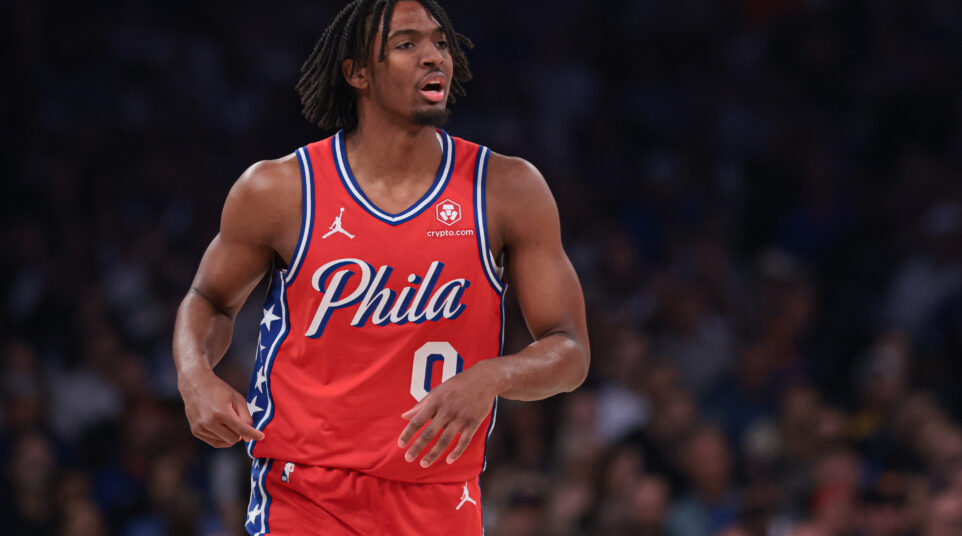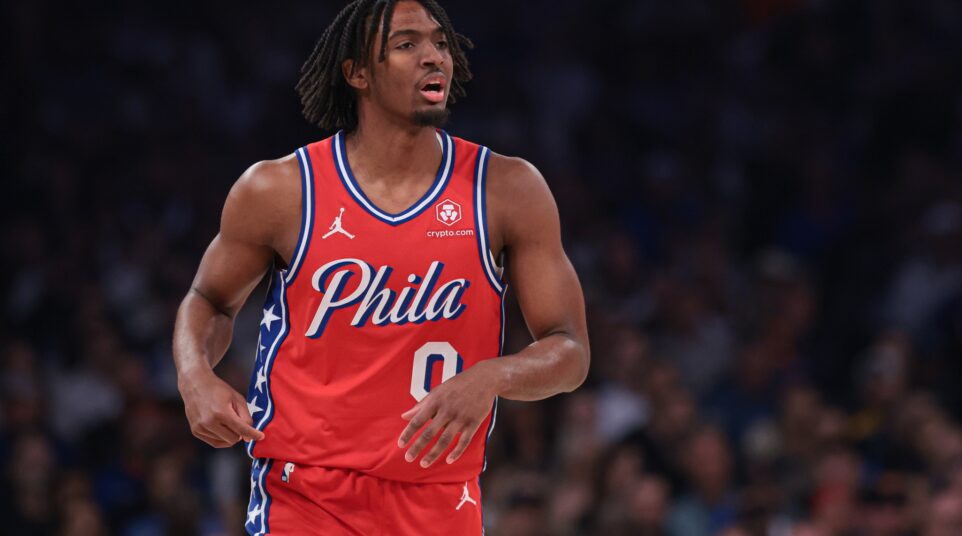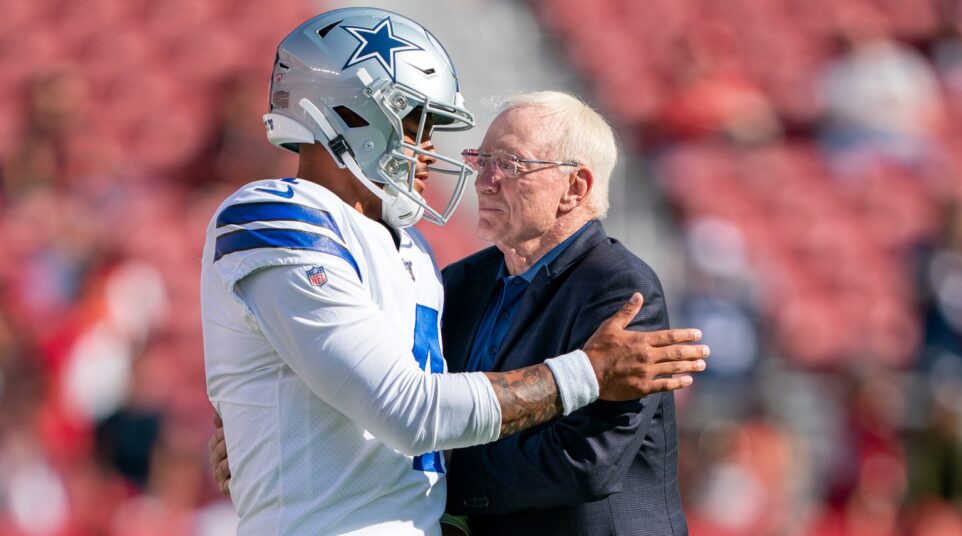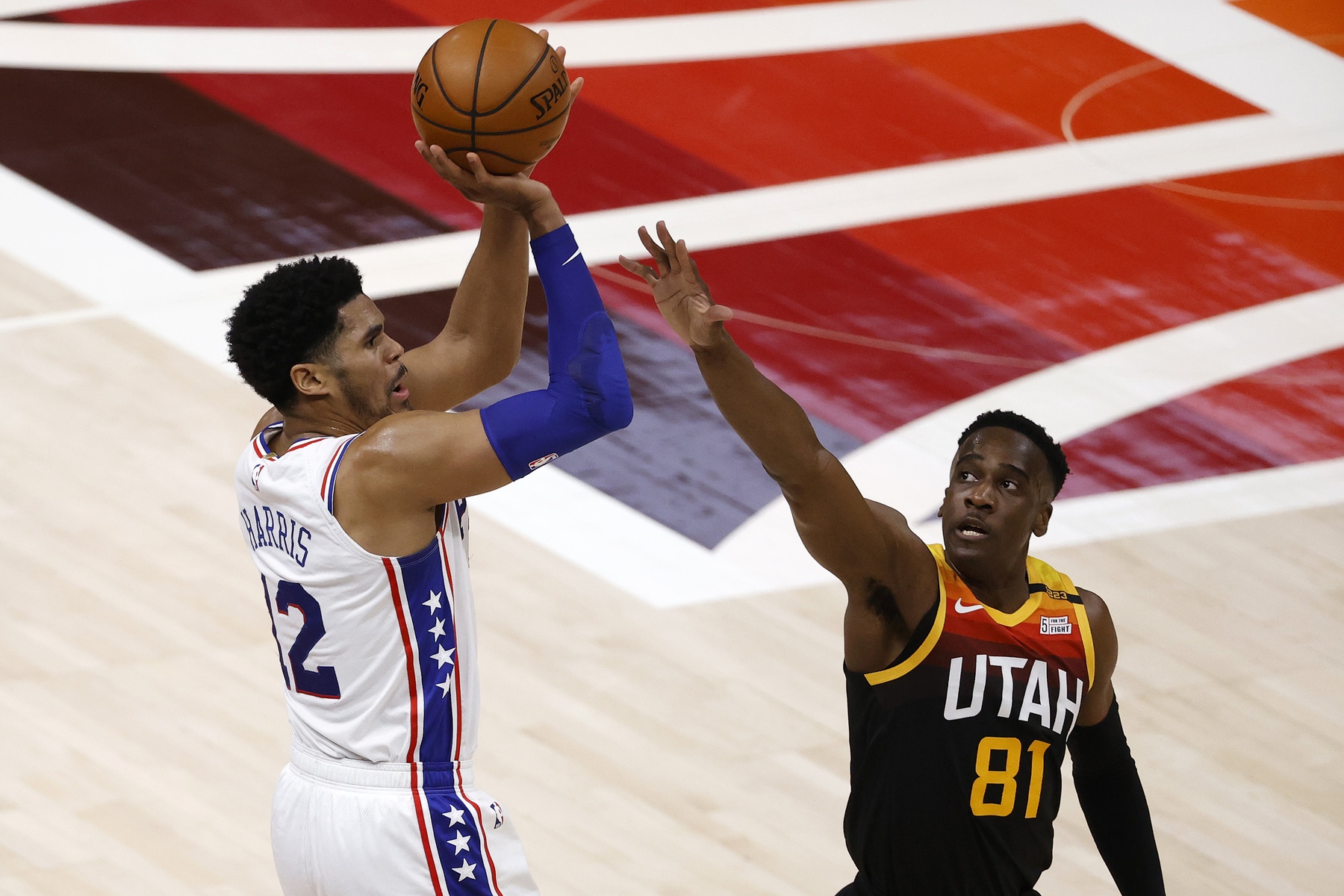
The Sixers Need to Shoot More Threes
Let’s start this one off with some poetry:
Roses are red
Violets are blue
Three pointers are worth
more than twos
You like that? Just call me William Butler Yeats.
He wasn’t into basketball, not that we know of, but if Yeats was writing about modern day analytics, he may have composed something resembling the above passage.
We’re talking about the Philadelphia 76ers, who remain in first place in the NBA’s Eastern Conference despite the fact that they’re currently on a three-game losing streak. There’s not much that this team needs to do better on the court, since they have been statistically dominant with a healthy starting lineup, but they could be a bit more efficient in the three point/shot selection department, where they’re currently lagging behind.
You saw it last night in the Utah loss, when the Embiid-less Sixers only hit eight of their 23 deep looks, which was good for a 34.8% number. The Jazz, with the league’s best record, shot 18-45 from three (40%) and used their artillery to wipe out an early Sixers lead and win by double digits.
Before the game, Doc Rivers was asked straight up why the Sixers three point volume is down, and he said this:
“It’s just ebbs and flows of the season. It’s a long season. I think when our defense is really good we tend to get more threes, and when our defense is average, we tend to get less threes. A lot of our threes come in transition off of misses, so I would say that’s probably the reason.”
It’s true. The best looks the Sixers generate on a nightly basis typically come from missed opponent shots, transitional pushes, and then Ben Simmons kick outs. Those are the wide-open catch-and-shoot looks that go in more often than not.
If we look at the most basic numbers, we find this:
- 28.9 three point attempts per game (28th out of 30 teams)
- 35.9% from three (18th out of 30 teams)
Just for efficiency’s sake, that first number should go up. If they shot five more threes per game, they’d move up to 20th, and would be closer in attempts/percentage disparity.
A couple of other numbers that tell the story:
- at home: 32 three point attempts per game, 37.3%
- on the road: 26 three point attempts per game, 34.4%
- in wins: 29.3 attempts per game
- in losses: 28.1 attempts per game
- in December: 32 attempts per game (4-1 record)
- in January: 30.2 attempts per game (11-5 record)
- in February: 23.6 attempts per game (3-4 record)
That’s a steep decline, following a linear monthly path. That volume of three-point attempts in February is insanely low in the contemporary NBA. It’s also important on an individual basis for Danny Green to hit his open looks (no duh) and for Seth Curry to recapture his pre-COVID form (also no duh).
Two of the better metrics we use to determine efficiency in shooting are EFG and TS, which are “effective field goal” percentage and “true shooting” percentage. These are weighted formulas, with EFG accounting for the fact that three pointers are more valuable than two-pointers. True shooting goes a step further and includes free throws.
The Sixers are currently a 54% EFG team, which is 14th in the league. True shooting sees them improve to 7th overall, at 58.2%. That’s on the strength of their league-leading 26.7 free throw attempts per game, of which 78% go in (this disparity could also improve).
Both EFG and TS are down in the month of February. It’s not a huge dip, but it’s there, and that’s partly because the Sixers are just shooting a lot more twos than threes.
You can see some of the funkiness here in their overall season shot plot:
Red areas show where they shoot really well compared to league averages. Blue areas are negatives and need to improve. As such, they’re a good midrange team while being slightly better than the pack from that central and right-sided three point zone. Certainly they’re good around the rim with Joel Embiid and Ben Simmons, but they’re taking waaaaaaay to many long twos.
The Sixers are a very good team and don’t need an overhaul, but they could benefit from some small tweaks in shot selection. Nothing crazy. It’s true that their best three-point efforts are generated in the early offense, via Simmons’ transitional movement, but if Doc Rivers can help his guys create some more decent looks from traditional half court possessions, then they’ll operate with more efficiency overall. The analytics department will appreciate it.


